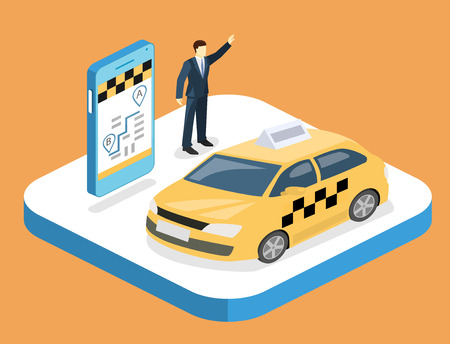What is Uninsured and Underinsured Motorist Coverage?
Uninsured Motorist (UM) and Underinsured Motorist (UIM) coverage are types of auto insurance that protect you if youre involved in an accident with a driver who doesnt have enough insurance—or any at all. These coverages are especially important in the United States, where not every driver on the road follows state insurance laws.
Understanding UM and UIM Coverage
Uninsured Motorist (UM) coverage steps in when you’re hit by a driver who doesn’t have car insurance. Underinsured Motorist (UIM) coverage kicks in if the other driver has insurance, but their policy limits aren’t high enough to cover all your damages or medical bills.
Why Are These Coverages Important?
Even though most states require drivers to carry auto insurance, some people still drive without it. Others may only buy the minimum required by law, which often isn’t enough to pay for serious injuries or property damage. If you get into an accident with one of these drivers, UM and UIM coverage can help pay for:
- Medical expenses for you and your passengers
- Lost wages if you can’t work due to injuries
- Pain and suffering
- Car repairs or replacement
An Easy Comparison Table
| Coverage Type | Who It Protects You From | What It Covers |
|---|---|---|
| Uninsured Motorist (UM) | Drivers with no insurance | Your medical bills, lost wages, pain and suffering, car damage |
| Underinsured Motorist (UIM) | Drivers with not enough insurance | The costs left after the other drivers insurance pays up to its limit |
State Requirements Vary
The rules about UM and UIM coverage change from state to state. Some states make this coverage mandatory, while others let you choose whether to add it to your policy. Either way, having these protections gives you peace of mind that you won’t be left paying big bills if an uninsured or underinsured driver causes an accident.
2. How Uninsured and Underinsured Motorist Claims Work
If you’re ever hit by a driver who doesn’t have insurance or doesn’t have enough coverage to pay for your damages, uninsured (UM) and underinsured motorist (UIM) coverage can save the day. Here’s how the claims process typically works for U.S. drivers.
What to Do Right After an Accident
Stay calm and make sure everyone is safe. Call 911 if there are any injuries. Even if the accident seems minor, it’s important to contact local law enforcement so there’s an official report—this helps when you file your claim.
Key Steps Immediately After the Accident:
| Step | Action |
|---|---|
| 1. Ensure Safety | Check for injuries and move to a safe spot if possible. |
| 2. Call Police | File an official police report at the scene. |
| 3. Gather Information | Collect names, addresses, insurance info (if any), vehicle details, and take photos of damage and location. |
| 4. Seek Medical Attention | Even minor injuries should be checked by a doctor for documentation. |
Filing a UM or UIM Claim With Your Insurer
If the other driver is uninsured or underinsured, notify your own auto insurance company as soon as possible. Provide them with all the information you’ve gathered, including a copy of the police report and medical records if you were injured.
The Claims Process Step-by-Step:
| Step | Description |
|---|---|
| 1. Notify Your Insurer | Contact your insurance agent or claims department to open a UM or UIM claim. |
| 2. Submit Documentation | Send in accident reports, photos, repair estimates, medical bills, and proof of lost wages if applicable. |
| 3. Investigation & Evaluation | Your insurer will review the documents, possibly interview you, and assess damages and injuries. |
| 4. Settlement Offer | Your insurer will propose a settlement based on policy limits and documented losses. |
| 5. Resolution & Payment | If you accept the offer, youll sign paperwork and receive payment for repairs, medical costs, or other covered expenses. |
Tips for a Smoother Claims Process
- Act quickly: Most policies require prompt notification after an accident involving an uninsured or underinsured driver.
- Keep records: Save all correspondence with your insurer, receipts for repairs, and medical bills.
- Follow up: Stay in touch with your claims adjuster to track progress and provide any additional information they request.
If you have questions about how much coverage you have or what steps to take next, your insurance agent can guide you through your policy details and help make sure you get the compensation you deserve.

3. State Laws and Requirements
Uninsured Motorist (UM) and Underinsured Motorist (UIM) coverage rules aren’t the same everywhere in the U.S. Each state sets its own requirements for whether you must have this coverage, how much is needed, and what features are included. This means drivers can have very different experiences depending on where they live.
Minimum Limits: What States Require
Some states make UM or UIM coverage mandatory, while others let drivers decide. Even among the states that require it, the minimum amounts of coverage can vary a lot. Here’s a quick look at how requirements differ in a few sample states:
| State | UM Coverage Required? | UIM Coverage Required? | Minimum Limit |
|---|---|---|---|
| California | No (optional) | No (optional) | N/A |
| New York | Yes | No (optional) | $25,000 per person / $50,000 per accident |
| Texas | No (must be offered) | No (must be offered) | $30,000 per person / $60,000 per accident |
| Illinois | Yes | No (optional) | $25,000 per person / $50,000 per accident |
| Florida | No (optional) | No (optional) | N/A |
Optional Features and Add-ons
Apart from basic UM/UIM coverage, some states allow or require additional options. For example:
- Stacking: Some states let you “stack” your UM/UIM coverage across multiple vehicles, increasing your protection if you own more than one car.
- Bodily Injury vs. Property Damage: Not all states include property damage in their UM/UIM policies—many only cover injuries to people.
- Add-on vs. Difference-in-Limits: The way underinsured motorist claims are paid varies by state; some pay the difference between what the other driver has and your policy limit, while others add both together up to your policy’s limit.
Why It Matters Where You Live
Your state’s laws determine what protection you automatically have—and what extra steps you might want to take. If you move or buy insurance in another state, it’s important to check the local requirements so you’re not caught off guard after an accident.
4. Common Scenarios and Real-Life Examples
Understanding When UM and UIM Coverage Steps In
Uninsured Motorist (UM) and Underinsured Motorist (UIM) coverage can seem confusing until you see how they work in everyday situations. These coverages are designed to protect you if you’re involved in an accident with a driver who either doesn’t have any insurance or doesn’t have enough to cover your expenses. Let’s look at some common scenarios where these coverages come into play for U.S. drivers.
Typical Situations Where UM/UIM Applies
| Scenario | How UM/UIM Helps |
|---|---|
| A hit-and-run accident | If the other driver leaves the scene and can’t be identified, UM coverage can pay for your injuries or damages. |
| The at-fault driver has no insurance | Your UM coverage steps in to cover medical bills, lost wages, and sometimes property damage. |
| The at-fault driver has minimum insurance that isn’t enough to pay your costs | UIM coverage fills the gap between what the other driver’s insurance pays and your actual expenses (up to your policy limits). |
| You’re a pedestrian or bicyclist hit by an uninsured driver | Your own UM/UIM policy may cover you, even if you weren’t driving at the time. |
| Passenger in someone else’s car involved in a crash with an uninsured driver | You may be able to use the car owner’s UM/UIM or your own policy for compensation. |
Real-Life Example #1: The Hit-and-Run Incident
Susan is driving home from work when another car runs a red light and hits her vehicle. The other driver quickly speeds away, and police can’t track them down. Susan’s car is badly damaged, and she suffers a broken arm. Since the other driver is unknown, Susan files a claim under her Uninsured Motorist coverage. Her policy helps pay for her medical bills and repairs, minus her deductible.
Real-Life Example #2: Not Enough Insurance to Go Around
James is rear-ended at a stop sign. The other driver admits fault but only carries the state minimum liability coverage of $25,000. James’s medical bills total $50,000. Since the other driver’s insurance only covers half, James uses his Underinsured Motorist coverage to make up the difference—his policy pays the remaining $25,000 (subject to his policy limits).
Quick Tips for U.S. Drivers:
- Check your policy to see if you have both UM and UIM coverage—they’re not always included automatically.
- Remember, these protections apply whether you’re driving, biking, or even walking as a pedestrian.
- Your family members may also be covered when using your vehicle or as pedestrians, depending on your policy terms.
- UM/UIM claims usually require proof that the other party was uninsured/underinsured—keep police reports and all documents handy after an accident.
5. Tips for Choosing the Right Coverage
Evaluating Your Risks as a U.S. Driver
Before selecting uninsured and underinsured motorist (UM/UIM) coverage, it’s important to assess your personal risk factors. Consider how often you drive, where you live, and local accident rates. For example, if you live in a state with a high percentage of uninsured drivers or frequently travel in busy urban areas, having higher UM/UIM limits may be smart.
Risk Factors Table
| Risk Factor | High Risk | Low Risk |
|---|---|---|
| State Uninsured Rate | Above 10% | Below 5% |
| Miles Driven Weekly | Over 200 miles | Under 50 miles |
| Urban vs Rural Area | Urban/City | Rural/Suburbs |
| Your Vehicle Value | $20,000+ | Under $10,000 |
| Your Health Insurance Coverage | Limited/None | Comprehensive |
Understanding Policy Terms & Limits
When looking at UM/UIM policies, you’ll see terms like “split limits” and “combined single limits.” Split limits list separate amounts for bodily injury per person, per accident, and property damage. Combined single limits offer one total amount for all damages. Make sure you know what these mean for your protection:
Common Policy Limits Example (Split Limit)
- $100,000/$300,000/$50,000:
- $100,000 per person for bodily injury
- $300,000 per accident for bodily injury (total)
- $50,000 per accident for property damage
If possible, match your UM/UIM limits to your liability coverage so your financial protection is consistent.
Selecting the Best Coverage for Your Needs
Your choice should reflect both your risk level and budget. Here are some tips to help you decide:
- Review State Requirements: Some states mandate UM/UIM coverage; others don’t. Check your state laws before buying.
- Consider Stacking: In some states, you can “stack” UM/UIM coverage across multiple vehicles on your policy to increase protection.
- Think About Medical Costs: Even minor accidents can result in big medical bills. Make sure your coverage accounts for possible hospital stays or long-term care needs.
- Balance Premiums and Protection: Higher limits cost more but offer greater peace of mind. Talk with an agent about what fits your budget and risk profile best.
- Review Annually: Life changes—review your policy each year to keep up with new circumstances like a new car or moving to a different state.
If you’re ever unsure about the details of your policy or which options are best for you, don’t hesitate to ask questions or request a policy review from your insurance agent. Remember: the right UM/UIM coverage isn’t just about meeting legal requirements—it’s about protecting yourself and your loved ones on the road.
